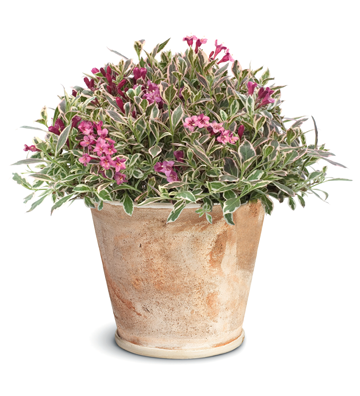
When most people think of holly, the image conjured up is one of bright red berries, glossy evergreen foliage and Christmas decorations. So when you talk to the average homeowner about deciduous holly (Ilex verticillata) they look at you as if you were moron. That's because many people consider deciduous holly is an oxymoron. A holly has glossy evergreen leaves, right. No, not always. Ilex verticillata, Winterberry Holly, or Winterberry is our native, wetland holly that looses it leaves each autumn. This is a beautiful shrub is all the more showy because its loss of leaves makes the berry display all the more showy. After the leaves have turned yellow and have fallen, you are left with a breathtaking view of thousands of brightly colored berries clinging to every stem. What a joy to have such color in the middle of winter.
Ilex verticillata is an amazing plant with a tremendous geographical range and a very diverse genetic expression. The native population of Ilex verticillata stretches from Nova Scotia, south to Florida and west to Missouri. It can be found throughout Michigan in low grounds, moist woods, swamps and occasionally in higher, drier soils. Even though it is most commonly found in low swampy soils, it can also be grown quite successfully in your average garden soils. It is an easy to grow plant that has few serious insect or disease problems. As for its genetic variation, this plant can range in heights from 3 feet to 15 feet. The width of the plant is also variable. In wet sites it normally suckers to form a dense spreading thicket. In drier garden soils, it tends to form a tighter clump. At blooming time this plant has little to attract attention. It has very small, inconspicuous white flowers, with male flowers and female flowers found in different individual plants. It is autumn, however, when this plant comes into its own, when its slender branches are draped with small but numerous berries right to the branch tip. The berries remain on the plant until midwinter adding color to the landscape when it is most needed. To facilitate a good berry set it is advisable to purchase at least one male for every three to five female plants and to plant the male in close proximity.
There are a good number of named cultivars to choose from in the market. The red fruited cultivar 'Oosterwijk' is a Dutch selection that is very popular in Europe for the production of cut branches. It is noted for holding its color and berries as a cut branch in flower arrangements. The most popular American selection for cutting is 'Winter Red'. The bright red berries are of medium size and produced in abundance. It is a multi-stemmed; erect plant maturing at 8 to 9 feet in height. One of my favorites is called 'Cacapon'. This beautiful plant has attractive, dark glossy green leaves and compact branching. It has abundant bright red fruit and makes a great landscape plant with year round interest. It matures to 6 to 8 feet and has a nice rounded habit. If you are looking for a smaller plant, 'Red Sprite' is a fantastic low mounded selection that matures at 3 to 5 feet. It has attractive, clean, dark green foliage, and tight branching right down to the ground. This plant makes a great low hedge or mass planting. Its low stature makes it an indispensable variety. For those looking for something a bit different, try 'Winter Gold'. This is yellow-berried sport of 'Winter Red'. The berries are not really gold, but instead and attractive pinkish-orange that lighten up with age. Another attractive color variation is 'Aurantiaca'. This beauty has bright pinkish-orange fruit that lighten with time. It is a eye-catching plant, although a bit untraditional.
Having a rich abundance of Ilex verticillata in Michigan, it is impossible not to hone in on a few exceptional native specimens. After years of observation we have chosen two plants worthy of introduction. One plant was located about ¼ mile off a local road, and for years it never fail but to catch our eye. It has dark red shinny berries produced in great abundance and a well branched rounded habit. The berry display was so nice, we simply named it Berry Nice. We had also been observing a native plant located in a ditch right along side the road. For years we would drive by this plant, and every autumn it would produce a very heavy crop of bright orangish-red fruit. After years of admiration we finally introduced this beauty under the name Berry Heavy. After observing these two selections for the last eight years, I was pleasantly surprised that they have the added benefit of losing their leaves well before other cultivars. This is a real benefit as you can enjoy a better, more unobstructed fruit display in the autumn.
No matter which selection you grow, Ilex verticillata is a shrub worth getting to know and understand. Landscapers on the East Coast, who are blessed with a climate which allows for the growing of many fine evergreen hollies, have adopted winterberry as a regular staple in their landscaping palette. If you're a landscaper, or a designer, I urge you to try at least one new plant a year and make Ilex verticillata this years plant. It is a tough, easy to grow shrub that looks great in mass. Use it in place of Viburnum dentatum, Arrowwood Viburnum. It will the perfect plant for wet, or poorly drained sites. Use it around retention ponds or near a runoff ditch. Don't reserve this worthy plant just for wet sites, is will grow just fine in drier soils. With the new demand for native plants, winterberry fits the bill and looks good too! And as the old commercial use to says "Try it - You'll like it!"


+small.jpg)
.jpg)

































